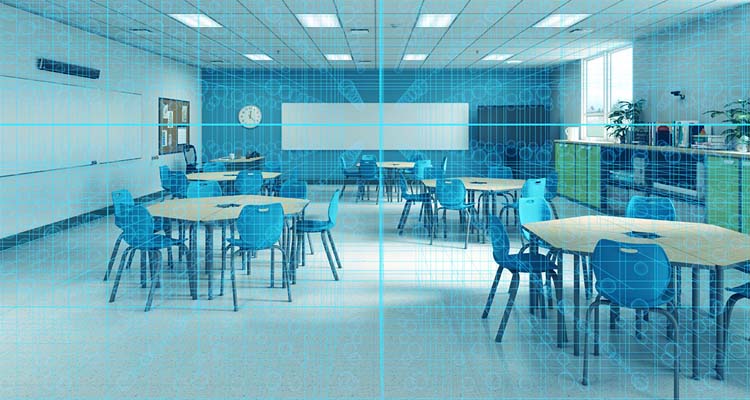The Extended Classroom and the Power To Transform
 By: Nancy Knowlton
By: Nancy Knowlton
EdTech Digest
Necessity is the mother of invention. It’s such a trite, overused statement, but it could not be truer today as we consider what lies ahead in primary and secondary education.
The pandemic completely upended so many accepted ways of doing things, forcing us to adapt on the fly. Much of that adaptation was hard slogging at first, then it became less hard. We had to make choices that were previously unimaginable, but now a real opportunity exists to consider what can be applied from that experience to transform teaching and learning.
An area that I see as increasingly interesting and important is the extended classroom. That’s where the physical classroom (with students and educators) is connected to individuals, other groups and other classrooms and spaces to enrich student learning.
The extended classroom leverages the tools and technologies already in place in so many modern classrooms – an interactive display (or whiteboard with projector), a computer, an internet connection and teaching and learning resources. It goes beyond the physical space through the addition of a camera and audio system, plus a conferencing application.
The Potential for the Extended Classroom
Consider what becomes possible when learning extends beyond school buildings:
- A live guide can take students on a tour through Stonehenge, the Parthenon in Athens or the Great Pyramids in Egypt. Beyond interacting with the guide, students can peruse their own resources simultaneously. The list of places that students and teachers can virtually visit is almost endless – zoos, science centers, research labs, space programs, airports and more.
- Students in remote, sparsely populated areas can gain access to the same high-level courses that students in major urban areas may take for granted, ensuring that they have the prerequisites for whatever they want to pursue in their postsecondary studies.
- A teacher sick day doesn’t have to mean a lost day when a teacher of the same subject can connect in from her classroom and lead a second class, whether it is across the district, within the same city or down the hall.
- Students who are required to stay home because of a sick family member or their own illness or recovery may join classes with their fellow students, staying on top of coursework instead of falling behind.
- Groups of students can connect classroom to classroom, across a city, country or region, fostering discoveries about their similarities and differences and developing empathy and understanding in the process.
It’s not just students who benefit from the transformations that are possible with the extended classroom – teachers and administrators do as well.
Using the same technology tools, teachers can join professional development sessions from the comfort of their own classroom or school. Because virtual PD requires no travel (unlike some face-to-face PD), sessions can be shorter, offered more frequently and be more aligned to teacher needs and how they learn best. And without the limitations of geography, schools can tap into a much wider range of speakers and programs.
For principals and other educators who routinely travel for administrative meetings, the same technology package can be used to join those meetings from their school. This saves time and money and also makes it easier to immediately respond to urgent issues.
Looking to the Future
It’s hard to imagine a steeper learning curve than what educators faced early in the pandemic. But schools and districts learned on the fly and came out ahead, showing just how adaptable and resilient teachers and students are. As a result, school districts developed new ways to reach students even when they aren’t physically present in the building.
The opportunity that lies ahead isn’t about upending basic education with students deciding if they want to learn from home one day or another. Instead, I see the extended classroom as a way to offer enriched learning opportunities and allow temporary learner accommodations that will have a huge impact on student engagement and progress. And it’s a way to give schools and districts the flexibility they need to meet needs in innovative and cost-effective ways.
There’s no question that the pandemic has been hard for many reasons. Concerns over learning loss and social-emotional development are plentiful. But that’s all the more reason to take what our experiences have taught us and change our education system for the better. And I think the extended classroom has the power to be one part of this crucial transformation.
To view the original article as it appeared in EdTech Digest, click here.


